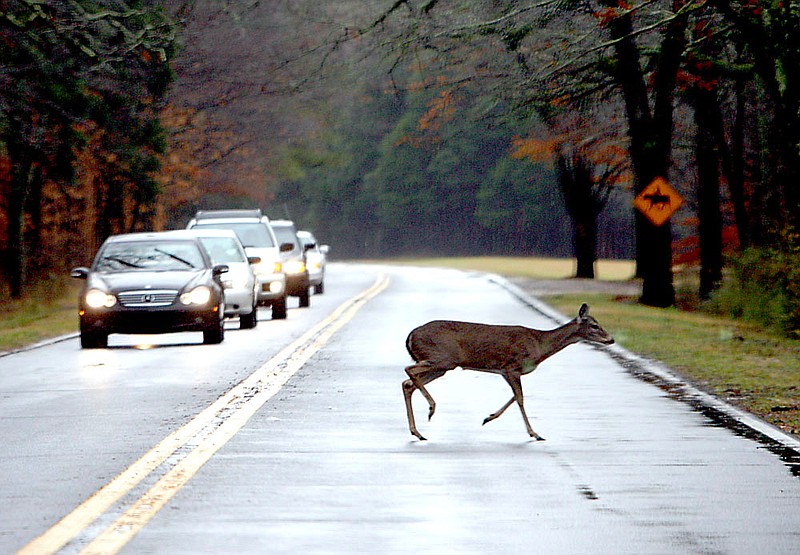An insurance company has released a study that shows deer-car collisions are on the rise and Georgia and Alabama drivers are at more risk than Tennesseans.
According to the study assembled by State Farm Insurance, which looks at the number of licensed drivers in each state and the number of deer-related collisions, one out of 150 Georgia and Alabama drivers is expected to be involved in such a crash.
Tennessee's odds are slightly better at one in 218, but all three states are in the "medium risk" category, according to the study.
In terms of total deer-auto collisions during the two-year period between July 2008 and July 2010, Georgia's 41,749 crashes rank No. 8, just behind Wisconsin. Alabama ranks 18th at 24,971 accidents, while Tennessee ranks 22nd with 20,432.
Tips for avoiding collisions:Be aware of deer crossing signs.* Remember that deer are most active between 6 and 9 p.m.* Use high-beam headlamps as much as possible at night to illuminate the areas from which deer will enter roadways.* Keep in mind that deer generally travel in herds - if you see one, there is a strong possibility others are nearby.* Do not rely on car-mounted deer whistles.* If a deer collision seems inevitable, attempting to swerve out of the way could cause you to lose control of your vehicle or place you in the path of an oncoming vehicle.Source: State Farm Insurance
Nationwide deer-auto collisions are up 21.1 percent over a similar period five years earlier, the study shows.
George Gallagher, a professor of animal science at Berry College in Rome, Ga., has monitored deer-auto collisions for years in an ongoing study with Berry and the University of Georgia.
He said deer adapt well to the suburbs, but their predators, such as wolves and mountain lions, do not. Because of this, herds feel safer near population centers and heavily traveled roads.
"In a lot of cases, it's about how many cars more than how many deer," Gallagher said.
Mike Browning, a spokesman for the Tennessee Department of Safety, said drivers need to be cautious this time of year wherever they travel.
"As you come into October, November and December, those are the months with the highest numbers of crashes [with deer] and that corresponds with mating season," he said. "If you see one deer, there are usually others."
Browning said the department is still working on its 2009 report, but the 2008 report shows 5,140 deer-related crashes in Tennessee.
Insurance figures may vary from the transportation department's data because crashes may be reported to insurance companies to pay for repair work, but not to law enforcement.
Gallagher said increasing accident figures may stem from a higher rate of accident reporting rather than a higher number of accidents. Before complex safety systems became standard on cars - including air bags, which are expensive to repair - drivers may have been less likely to file insurance claims if the damage was easily repairable, Gallagher theorized.
The report also shows that less than 10 percent of auto-deer collisions from 2004 to 2008cq occurred on interstate highways, meaning drivers on rural roads face the bulk of the danger.
Gallagher questioned some of the State Farm study's methodology, but said overall it's a "reasonable estimate."
Tennessee's deer and accident numbers, he said, are probably lower because of a disease that hit the state's deer population two or three years ago.
Much of Gallagher's work has focused on ways to keep deer off roadways, but he said every method comes at a financial and environmental price.
"If we really wanted to, we could fence out deer," he said. "There's a cost-benefit relationship to worry about."
Click here to vote in our daily poll: Have you ever run into a deer with your vehicle?
